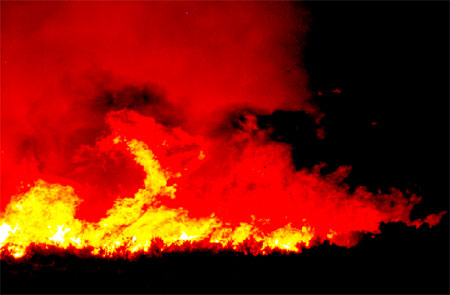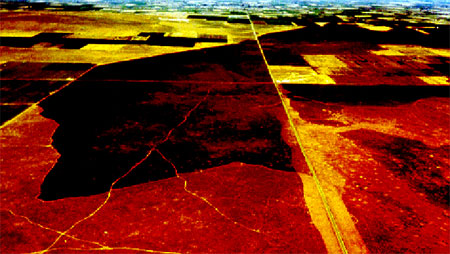
Point Fire, 1995
&
Island Fork Fire, 1999
dedication
Point Fire Case Study
Point Fire Accident Investigation
A. Point Fire Overview
B. Investigation
C. Recommendations
D. Supporting Data
- Sequence of Events
- Organization Charts
- Site Investigation
- Fire Behavior Report
- Property Damage Report
- Witness Statements
- Outline of Kuna Wildland Training Provided by BLM
E. Records and Reports
- Preplanned Dispatch
- BLM Radio Transmission Log
- Ada County Dispatch Log
- Fire Incident Status Summary
- Escaped Fire Situation Analysis
- Wildland Fire Entrapment Report
- Technical Analysis of Personal Protective Equipment
- Vehicle Inspection
- Weather Reports
F. Glossary
——————
Island Fork Fire Accident Investigation
——————
Point Fire — U.S. District Court Civil Case
Ruling on I.C.'s Decisions - Nov. 10, 1998
• Factual Background
• Legal Analysis
Ruling on BLM Liability - Feb. 19, 1999
• Findings
of Fact
• Legal Standards
• Analysis
Ruling on Public Safety Officer Benefits
(PSOB)
——————
——————
Colorado Firecamp extends special thanks to Linda Perkins, BLM
Idaho State FOIA Coordinator, for her friendly assistance in gathering
the Point Fire documents. BLM FOIA Letter
|
POINT
FIRE
ACCIDENT INVESTIGATION
Point Fire Overview (continued)
Date of Incident: July 28, 1995
Time of Incident: 1829 MDT
Incident Name: Point Fire
Legal Description of Location: T1N R1W Section 35 SE1/4 NW
Rescue Attempts
Rescue efforts were hampered by the duration and intensity of the fire,
caused by the heavy sage-brush fuel.

Winds gusting to over
40 miles an hour caused the Point Fire to blow up, leading to the entrapment
of the two firefighters. (Note: This
Point Fire picture was released by BLM in response to a FOIA request.
It is similar but not identical to the picture in the original investigation
report.)
After the flame front passed, several rescue attempts were made by members
of Kuna RFD and BLM crews. The residual heat from the sagebrush made the
first few attempts to reach the engine impossible. At 2121, Kuna RFD Engine
622 was able to approach the vehicle. Engine 620 was still on fire. Kuna
RFD Engine 622 extinguished the flames and gained access to the vehicle.
Kuna Command was notified that two fatalities had occurred.
Most fatalities that occur on wildfires are not the result of a single
mistake or circumstance. Rather, they occur as a chain of unfortunate
occurrences. Such is the case in the deaths of [————]
[————] and [————] [————].
Taken individually, the three primary events that led to the accident
were all probably survivable, and perhaps, not even remarkable. But when
the decision to leave the burned area and drive into heavy, unburned fuels
was grouped with Kuna RFD Engine 620 stalling and the advent of 40 to
50 mile-an-hour winds from the thunderstorm, it proved to be a fatal combination
of events.

Point Fire scene. Fire
started in the lower portion. Swan Falls Road (asphalt) to right of initial
fire area.
|